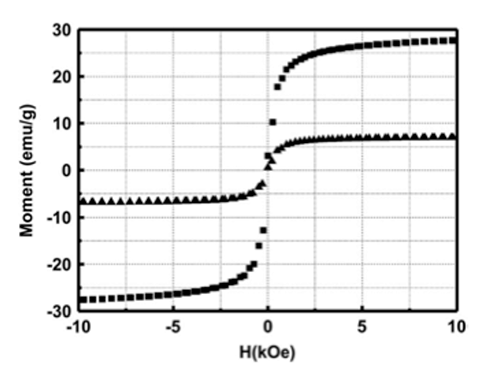Bangs Laboratories offers multiple lines of superparamagnetic microparticles with different chemical and physical properties to address a wide range of applications in the life sciences, e.g. as solid supports for cell separations, biomolecule isolations and purifications, immunoassays, and suspension arrays, as labels for MR imaging studies, etc. Click to download pdf version. A few examples of properties that vary between the different magnetic particle types are listed below:
- size (diameter and uniformity)
- shape (spherical, semi-spheroid, irregular-shaped)
- density
- composition and synthesis methods (polymer-based, non-polymeric)
- surface properties (exposed iron oxide, hydrophobicity/hydrophilicity, etc.)
- functional properpties and coatings available
- autofluorescence and background signal in chemiluminescence-based assays
- iron oxide content and magnetic properties
Bangs does not routinely measure the iron oxide content or magnetic properties of our superparamagnetic particle offerings. However, representative data is available for a few particle lines. Table 1 lists approximate percent magnetite values for Bangs’ magnetic particle lines. Representative magnetization data for BioMag®, COMPEL™, magnetic classical (MC) / magnetic encapsulated (ME), and ProMag® particle lines may be found in Fig. 1 – 6.
Table 1. Approximate percent magnetite values/ranges for representative ProMag®, BioMag®, COMPEL™, magnetic classical, and magnetic encapsulated particles.
| Catalog Code (s) | Description | Percent Magnetite (%) |
|---|---|---|
| PM*1N | ProMag® 1 Series | ~26.5% |
| PM*3N | ProMag® 3 Series | ~18% |
| PM*3HP | ProMag® 3 HP | ~17% |
| MC03F | ~0.9µm magnetic classical | ~62% |
| ME03F | ~0.9µm magnetic encapsulated | ~46% |
| ME04F | ~1.6µm magnetic encapsulated | ~42.5% |
| BM***, BP***, BMM** | BioMag®, BioMag®Plus, BioMag® Maxi | >90% |
| UMC3N, UMC3F | ~3µm COMPEL™ | ~10-12.5% |
| UMC3N, UMC3F | ~6µm COMPEL™ | ~5.5-6.5% |
| UMC4N, UMC4F | ~8µm COMPEL™ |
~3-3.6 |

Figure 2. Hysteresis curve for representative 6µm COMPEL™ magnetic beads (magnetization value of 2.80 emu/g).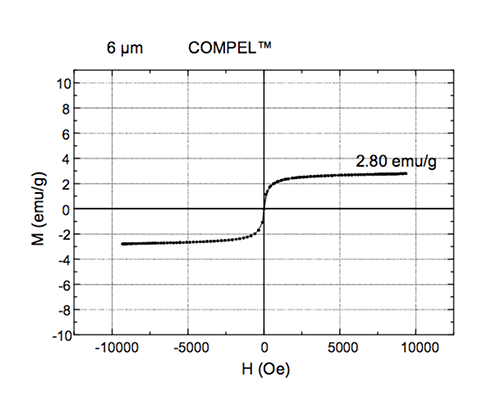
Figure 3. SQUID magnetometry magnetization data for representative 3µm, 6µm, and 8µm COMPEL™ magnetic beads at 300K (room temperature).
| COMPEL SAMPLE | Saturation magnetization (emu/g) | Initial susceptibility (emu/gOe) |
|---|---|---|
| 303-3µm | 8.79 | 0.0389 |
| 603-6µm | 2.95 | 0.0189 |
| 803-8µm | 2.54 | 0.0149 |
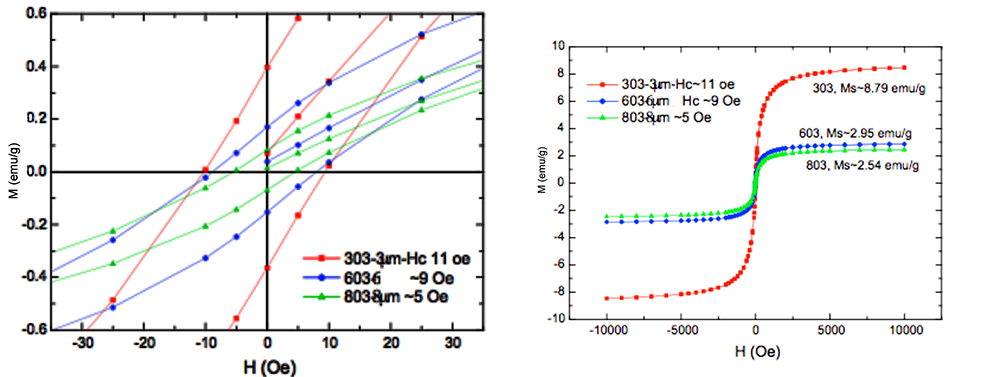
Figure 4. a) SQUID magnetometry magnetization data for representative COMPEL™ magnetic beads at 5K. b) VSM mode data for representative 3µm, 6µm, and 8µm COMPEL™ magnetic beads. c) SQUID and VSM data summary for representative 3µm, 6µm, and 8µm COMPEL™ magnetic beads.
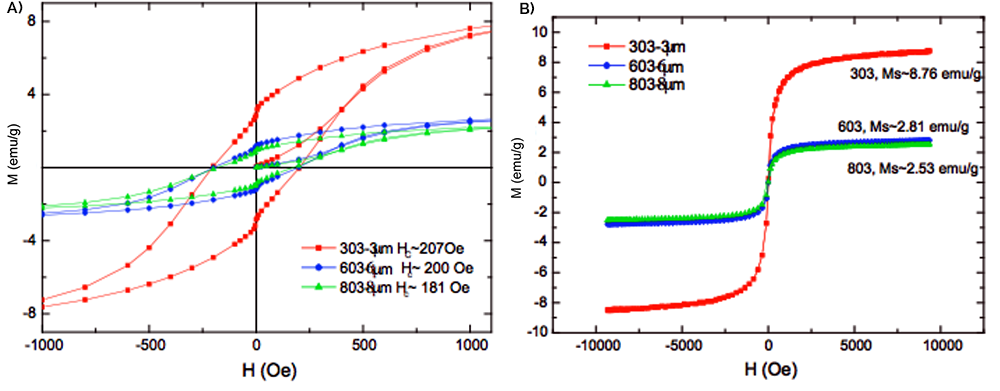
| COMPEL sample | SQUID data | Saturation magnetization from the VSM data (emu/g) |
|---|---|---|
| Ms (emu/g) Coercivity (Oe) 300k 5k 300k 5k |
||
| 303-3µm | 8.79 9.84 ~11 ~207 | 8.76 |
| 303-6µm | 2.95 3.26 ~9 ~200 | 2.81 |
| 603-8µm | 2.54 2.81 ~5 ~181 | 2.53 |
Figure 5. Hysteresis curve for representative magnetic classical and magnetic encapsulated particles (orange diamonds, 60% magnetite).
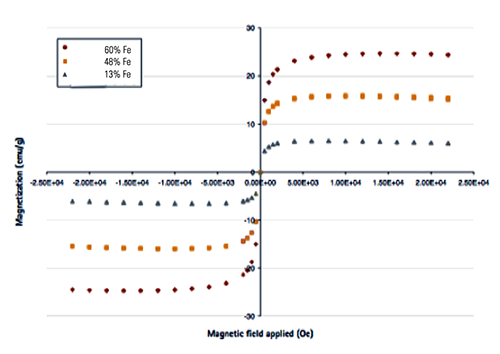
Figure 6. Hysteresis curve for representative ProMag® 3 Series particles (squares, magnetic saturation value of 27.6 emu/g). Graph taken from: Hu J, Xie M, Wen C-Y, Zhang Z-L, Xie H-Y, Liu A-A, Chen Y-Y, Zhou S-M, Pang D-W. (2011) A multicomponent recognition and separation system established via fluorescent, magnetic, dualencoded multifunctional bioprobes. Biomaterials.;32:1177-84.
